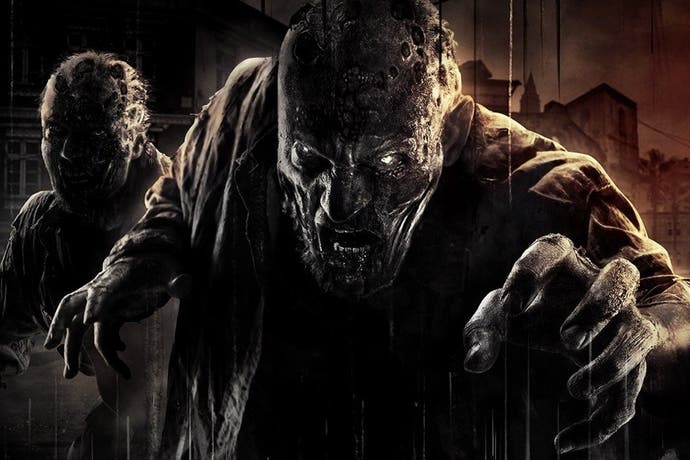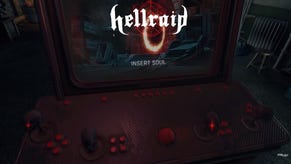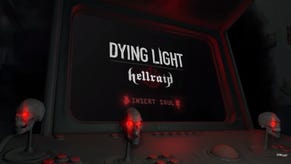Face-Off: Dying Light
Xbox One, PS4 and PC head-to-head.
For some developers, the start of a new generation offers an opportunity to wipe the slate clean and deliver experiences previously impossible on last-gen hardware, while for others, the power is finally there to make enhanced versions of their existing tech shine. Just like DICE's Frostbite and Crytek's CryEngine, Techland's Chrome Engine struggled on last-gen systems, but there's the sense that the technology has finally found its feet on PS4 and Xbox One. Earlier this week, we established that the Polish developer has sorted out most of its performance issues, but with more game hours under our belt we can better discern how version six of the Chrome Engine operates on the new consoles, and factor in the PC version too.
In migrating to the next-generation consoles and PC hardware, Chrome Engine is now in its sixth iteration, with a range of new features added to the mix since the release of its prior outings on the Dead Island titles. Most importantly, the team has switched to a physically based materials pipeline, allowing for a realistic depiction of how light interacts with materials, more closely simulating the real world. Dynamic weather is also included, with adjustments to the wetness (or gloss) properties of objects allowing for an expected level of shine as rain falls. In addition, light probes are pre-calculated and stored as spherical harmonics for each time of day and weather condition with the engine able to dynamically interpolate between them. The overall look is impressive, if not quite as striking as one might expect, but it's clear that Techland has made huge strides in its transition to this next-gen version of its tech.
So let's get down to basics. As we mentioned in our performance analysis, Dying Light operates at a rendering resolution of 1920x1080 on PS4 while Xbox One is in the region of 1536x1080, with both seemingly using a variant of SMAA T2X anti-aliasing. That's usually one of the best forms of post-process anti-aliasing available but in Dying Light, there are some noticeable 'ghosting' artefacts.
Despite the resolution deficit, image quality is very good on Xbox One - conceivably, this rendering set-up should allow the developers to cram five buffers at 4bpp (bits per pixel) or two FP16 render targets plus depth into the Xbox One's 32MB ESRAM, with a fairly minimal impact on image quality. The PC version, of course, offers full arbitrary resolution support as one would expect. Unfortunately, the only included anti-aliasing option in the PC version closely mirrors the console version, suffering from the same temporal ghosting issues. We've seen some excellent implementations of SMAA, but the ghosting here is too severe to overlook, particularly at 30fps. Some additional AA options would be much appreciated on the PC side.
Alternative comparisons:
Outside of limited anti-aliasing options, the PC version of Dying Light is reasonably tweakable, with a range of adjustments available including shadow and texture quality, view distance, motion blur, and a pair of Nvidia Gameworks features: HBAO+ and Nvidia depth of field. Crucially, Techland has even provided an adjustable field of view option - something its previous games have lacked. Unfortunately, this option has a pretty noticeable impact on performance, so use it carefully. Curiously, Dying Light includes preliminary Oculus Rift support that is enabled through the game's config file. It's a neat feature but at the moment it's clearly unfinished and difficult to use, mostly due to interface limitations. The processing requirements are also rather high, making it difficult to reach the desired 75fps necessary for smooth head tracking.
We've already established the baseline for console performance as a capped 30fps with occasional dips and on the PC side, Dying Light also proves surprisingly demanding. In this case it seems that the engine isn't particularly well multi-threaded with a lot of the game's performance hinging on a single core. When the first core becomes saturated, likely with DirectX draw calls (the instructions sent to the GPU), engine performance drops significantly, despite other cores remaining mostly available.
The particular setting responsible for most of the performance woes faced in the PC version is the view distance slider. Increasing this to its maximum value brings the frame-rate on a Core i5-3570K/GTX 780 PC well under 60fps. By dropping to 35 per cent or less, we find that it is possible to attain a stable 60fps on our system, but going beyond this - particularly over 50 per cent - sees drops performance dramatically. We examined the view distance slider at various intervals to determine how it stacks up on consoles and the results are interesting - the Xbox One and PS4 setting appears to fall below the PC version's lowest possible setting. It's just a hair lower, of course, but it is lower nonetheless, which may help to explain the high CPU load we see on PC.
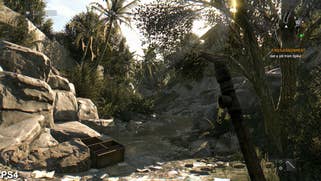



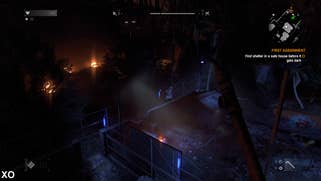
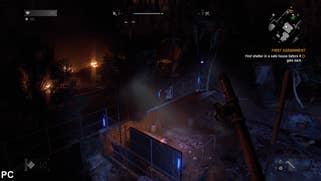
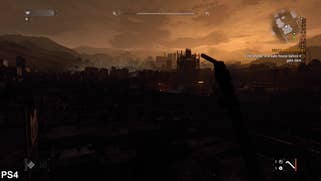

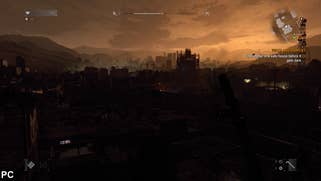
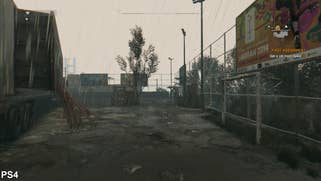

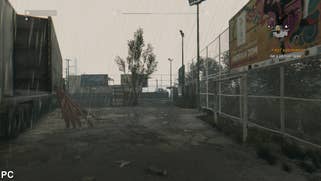
At least Techland has implemented an extremely competent LOD (level of detail) system here - even at console settings pop-in never becomes a particularly severe issue. Gameplay critical elements, such as buildings necessary for platforming or zombies, are drawn out suitably far with little to no visible pop-in that would impact the experience. Most of the pop-in is limited to non-critical items such as trees and props which don't prove particularly distracting as they pop into view during gameplay. For our test system at least, we feel that dropping this slider to around 35 per cent is a good compromise that provides a reasonable view distance without bottlenecking the whole system. There's a tendancy to ramp up all PC settings to the max, then complain about dire performance - as it is, Dying Light is fairly scalable. On as close to console-level settings as we can get, a Core i3 PC with a GTX 750 Ti managed a console-like 30fps at 1080p.
Strange as it may seem, the higher view distance settings actually have a somewhat negative impact on image quality. The low detail trees used at a distance while using lower settings are mostly free of aliasing due to their simplistic shapes. However, on the maximum setting, full detail models are visible into the distance, introducing a lot of unsightly shimmering. Downscaling or SSAA could clean this up but as it stands, cranking up the view distance slider while using post-process anti-aliasing produces a noisier image overall.
When it comes to the rest of the settings the console versions actually stack up favourably against the PC version. Shadow map resolution is at least on par with the PC version's medium setting, for instance. Shadow quality is actually a high point for the game thanks to smooth shadow jittering that cuts back on noticeable pixelation. In addition to world shadows, we noticed that the player's flashlight is capable of casting dynamic shadow volumes. The number of objects capable of casting shadows is strangely random, however - the rooftops of certain building produce appropriate shadow volumes while a wall on the same structure may not. Even some of the larger foliage elements cast shadows from the players light source. The foliage setting is also equivalent to the high option on PC and primarily affects the density of grassy fields rather than the distance in which foliage is drawn.

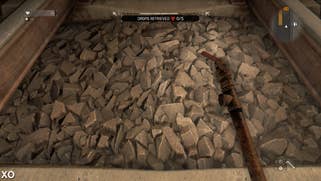

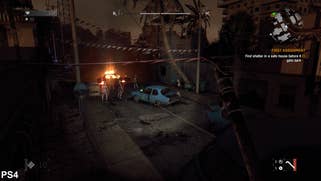
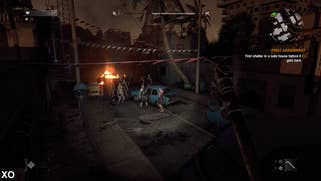
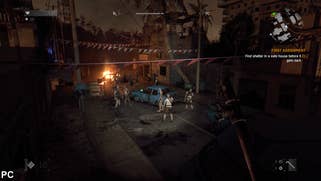


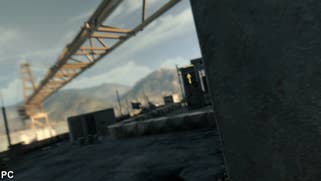
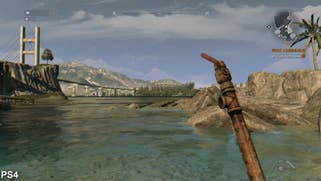
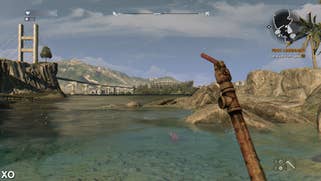
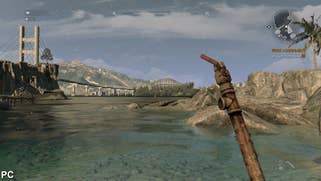
While the lighting during daytime sequences is equivalent between all three versions of the game, we did notice a surprising absence on consoles at night: dynamic light sources. In the PC version, objects such a flaming barrels act as a light source impacting the environment and characters around it, though not casting additional shadows. On the consoles, the developer simply uses a mixture of bloom and alpha effects to simulate bright lights without actually including a visible light source. Standing atop a large building demonstrates that the PC version is capable of drawing these light sources well into the distance while consoles lack them completely. This doesn't make as large a difference as one might expect due to the reliance on darkness to build atmosphere, but it definitely changes the feel of the game during these sequences and is a clear win for the PC version.
Texture quality is equivalent to the PC version's high setting with generally high resolution surfaces visible throughout the world. Knocking the setting down to medium, however, suggests that the textures used are the same, with the difference lying in how the assets are cached.
Post-processing effects are one of the game's strongest points and are consistent between the console and PC versions. Dying Light makes constant use of a very strong motion blur technique that we absolutely love. It's a very rich implementation, free of artefacts, affecting objects, camera panning, and character movement in equal measures. This also allows the console game's 30fps update to look as smooth as it does and it gives a lot of impact to the game's animations. Oddly enough, we did notice a few minor edge artefacts specifically in the PC version that are absent on console. Screen-space sun-shafts are also prominently featured and help tremendously when it comes to setting the mood. On top of that, a film grain effect is also employed and while it feels a bit overdone, it is possible to disable this feature on PC via the game's config files.
Nvidia Gameworks features are kept to a minimum here, with the expected inclusion of HBAO+ alongside the Nvidia depth of field tech. HBAO+ is immediately evident throughout the game and dramatically improves image consistency. However, the implementation of depth of field leaves a bit to be desired, with results that aren't appreciably more attractive than the console implementation. This is likely down to the visual direction the game takes but at least the effect seems to have little impact on performance here.
Moving onto PC performance, we've already established that the game is fairly scalable, mostly related to how the view distance slider is set-up. While we strongly recommend lowering the slider significantly, it is possible to play the game maxed out with a consistent frame-rate. For capturing purposes, we opted to cap our frame-rate at 30fps in order to represent the PC version at its highest possible image quality settings while achieving stable performance on the i5/GTX 780 set-up used for testing. Regardless of this choice however, there are frame-pacing issues present in Dying Light that require aid from external software to resolve. By default the game hitches and skips pretty noticeably, but employing Riva Tuner Statistics Server (a part of the MSI Afterburner monitoring and overclocking package) with a limit of 30/60fps solves this problem, restoring an even frame-time.
We've already covered Dying Light console performance of course, but we do have a few additional comments based on further play. On Xbox One, tearing appears in conjunction with GPU-taxing elements such as foliage, smoke, and dynamic lighting. Running near an open flame with smoke billowing out or through any foliage-dense fields triggers torn frames that impact fluidity. It crops up more than our initial tests suggested and definitely impacts the overall consistency of the experience. To cut a long story short, we recommend avoiding the Xbox One version of Dying Light if you have trouble getting on with screen-tear.
On PlayStation 4, the frame-rate remains very stable but there are instances where performance jumps momentarily above 30fps, introducing judder. Essentially, in a number of less demanding sections, such as the separate underground quests or when simply looking towards the sky while standing on a high perch, we note plenty of lurches as the frame-rate jumps over 30fps for just a split-second. It hurts the fluidity of the experience in these situations and we hope it's addressed in a future patch.
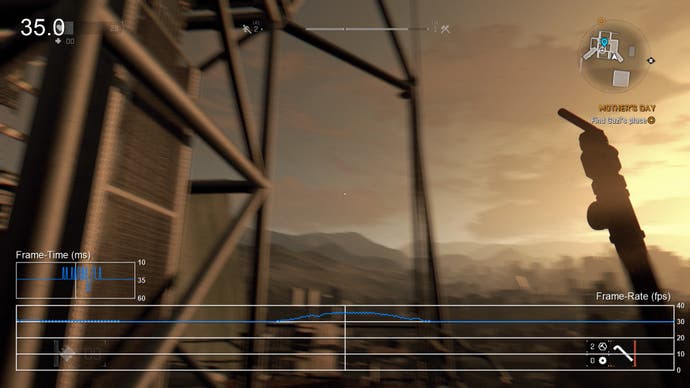
Dying Light: the Digital Foundry verdict
Despite our criticisms, Dying Light is a beautiful game in motion and works well across all three platforms. The animation in particular is very well done - motion has real weight and the way melee weapons physically connect with enemies is very effective. Backed up by excellent post-processing effects, densely populated environments, strong lighting effects and gently blowing foliage, Dying Light impresses even in the face of its drawbacks. Everything feels streamlined and solidly pieced together while the game itself is a joy to play.
Techland has a history of technically unpolished console games and, in that sense, Dying Light is a huge improvement with a level of stability far exceeding anything the company has released in the past. Even at its worst on Xbox One, the performance is far more consistent than its last generation games. There was a time when Dying Light was also planned for release on PS3 and Xbox 360 - now that would have been interesting to see, but based on the ambition of the new Chrome Engine, plus our experience of Techland's prior catalogue, we're glad that the developer chose not to pursue those releases.
As things stand, anyone with an interest in the game should be able to enjoy it on any of the three platforms. Between the two console versions we definitely have to give the nod to the PS4 version with its improved frame-rate and better texture streaming, its higher resolution, and a near complete lack of screen-tear. However, anyone with a decent gaming PC should definitely stick to the computer version as it offers excellent scalability alongside further improved visuals. Ultimately, we were impressed with Techland's first release on this new generation of gaming hardware and look forward to seeing more of Chrome Engine 6 in the future.
